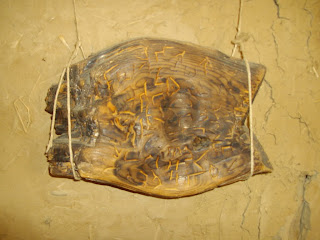L'aereo ispirato allo Pterosauro volerebbe meglio, grazie alla cresta.
 Un piccolo aereo ispirato alla forma dello Pterosauro riduce il raggio di sterzata fino al 14%. Ma cos'ha di particolare questo disegno? La tipica cresta che orna la testa del primo vertebrato volante, vissuto circa 225 milioni di anni fa years ago ed estinto insieme ai dinosauri 65 milioni di anni fa. La scoperta è di tre ricercatori: Brian Roberts e Rick Lind dell'Università della Florida, Sankar Chatterjee della Texas Tech University, i quali hanno pubblicato uno studio sulla rivista Bioinspiration & Biomimetics.
Un piccolo aereo ispirato alla forma dello Pterosauro riduce il raggio di sterzata fino al 14%. Ma cos'ha di particolare questo disegno? La tipica cresta che orna la testa del primo vertebrato volante, vissuto circa 225 milioni di anni fa years ago ed estinto insieme ai dinosauri 65 milioni di anni fa. La scoperta è di tre ricercatori: Brian Roberts e Rick Lind dell'Università della Florida, Sankar Chatterjee della Texas Tech University, i quali hanno pubblicato uno studio sulla rivista Bioinspiration & Biomimetics.  Bioinspir Biomim. 2011 Jun;6(2):026010. Epub 2011 May 11.
Bioinspir Biomim. 2011 Jun;6(2):026010. Epub 2011 May 11.Flight dynamics of a pterosaur-inspired aircraft utilizing a variable-placement vertical tail. Roberts B, Lind R, Chatterjee S. (Department of Mechanical and Aerospace Engineering, University of Florida, Gainesville, FL 32611, USA)
Abstract
Mission performance for small aircraft is often dependent on the turn radius. Various biologically inspired concepts have demonstrated that performance can be improved by morphing the wings in a manner similar to birds and bats; however, the morphing of the vertical tail has received less attention since neither birds nor bats have an appreciable vertical tail. This paper investigates a design that incorporates the morphing of the vertical tail based on the cranial crest of a pterosaur. The aerodynamics demonstrate a reduction in the turn radius of 14% when placing the tail over the nose in comparison to a traditional aft-placed vertical tail. The flight dynamics associated with this configuration has unique characteristics such as a Dutch-roll mode with excessive roll motion and a skid divergence that replaces the roll convergence.
Credits: picture of aircraft inspired by Pterosaur: Roberts, et al. ©2011 IOP Publishing Ltd; picture of Pterosaur: Todd Marshall



Commenti